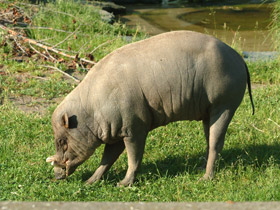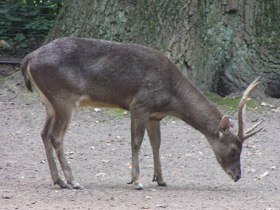Phylogenetic Tree of Even-toed ungulates
The even-toed ungulates - Artiodactyla
The name of this group of animals describes the structure of their feet: the weight of these ungulates is borne equally by well-developed third and fourth toes. The tips of the toes are covered with thick horny hooves which allow these ungulates run fast on hard surfaces. Other digits (there are two of them in most species) are less developed and located over the central digits; their tips are also strengthened with hooves. Depending on the species habitat type, the hooves may have specific adaptations; e.g. ungulates found in the forests and tundra usually have wide hooves, while the hooves of the species that occur in mountain and rocky habitats are narrow. While walking through squashy ground or deep snow, the animals put hooves apart, trying to enlarge the bearing area. Mountain ungulates use their hooves for climbing the talus and rocks, and northern deer can dig into deep snow and brake ice with their hooves.
The even-toed ungulates are mostly medium-sized or large mammals, with elongated face and horns that may belong to different horn types. For instance, the deer have solid deciduous horns, called antlers, which are shed and regrown every year and are covered with skin and fur only during the periods of growth; the horns of the giraffes are short, do not have branches and are always covered with skin and fur; the horns of the bovids are hollow and do not have branches; they are furless and never shed.
The even-toed ungulates occur on all continents, except for Antarctica and Australia (where they have been acclimatized), and inhabit almost all natural areas, such as steppes, forest-steppes, deserts, forests, tundra, and mountains. This group includes about 220 species that are categorized in three suborders: Nonruminantia, Ruminantia Suiformes, Cetruminantia, and Tylopoda.












































